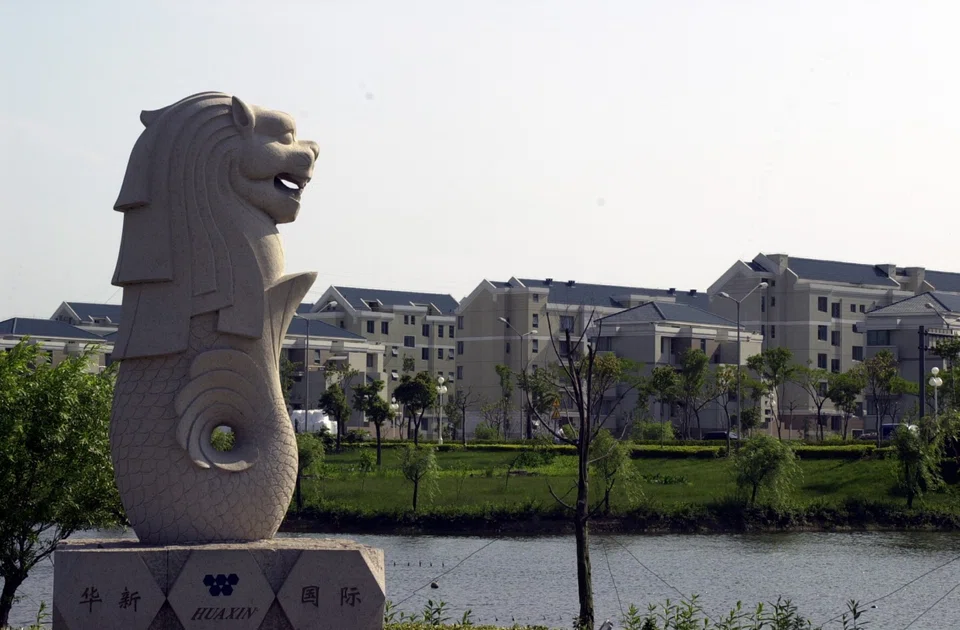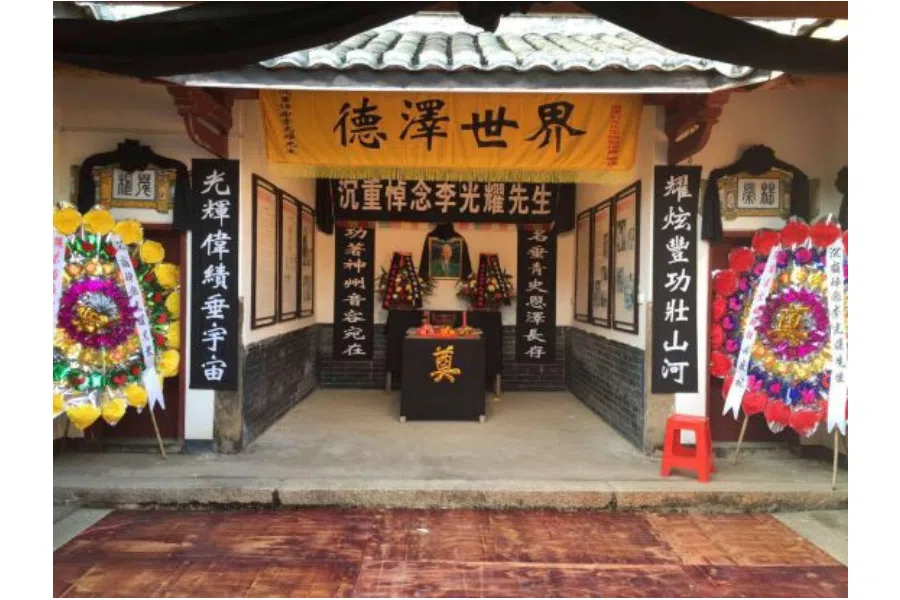China's misperceptions of Singapore
Chen Nahui of the China University of Political Science and Law opines that China's misperceptions of Singapore range from those which are "not too far off" from reality or similar ones, to those that differ in characteristic elements, those that differ because of time-lag, and those that have sprouted from one's imagination. These explained for China's "unrealistic expectations" of Singapore.

While perceptions are based on objective reality, the two things are, to some extent, independent of one another. As a result, perceptions often fail to match objective reality and are thus fundamentally inaccurate. Not all misperceptions are the same, though. I have here classified China's misperceptions of Singapore into four types: similar, different in element, different in time, and imaginary.
It is important to note that China's perception of Singapore at any given point in time is multifaceted. Each facet can be seen as a "perceptual element". Hence, in my discussion of the difference between perception and objective reality, I am speaking in terms of these "perceptual elements".
In the last two to three decades, the Nanyang Technological University has designed training programmes tailored for Chinese officials, and has even been given a nickname by the PRC media - overseas branch of the Central Party School.
"Similar" or "not too far off" misperceptions are the most common. In most instances, the Chinese perception of Singapore is a true reflection of Singapore's objective reality. However, because of inherent incongruities, perceptions and objective reality can only be, at most, similar to one another.

China has been sending officials to Singapore for learning trips since 1992. In the last two to three decades, the Nanyang Technological University has designed training programmes tailored for Chinese officials, and has even been given a nickname by the PRC media - overseas branch of the Central Party School.
Chinese officials gain theoretical knowledge in the Singapore classrooms, pick up practical tips in sharing sessions with former Singaporean government officials, and are given the opportunity to visit Singapore governmental ministries, companies, and organisations. Living here, they get to experience Singapore first-hand, gaining an objective reality of Singapore that is relatively true, and their experiences help shape the Chinese public's perception of Singapore.
Misperceptions that are "different in element" refer to discrepancy in identifying the representative characteristics of Singapore. For example, most Chinese believe that learning from Singapore is more feasible and practical for China, as compared to learning from Western countries, because of cultural similarities between the two "Chinese societies". But in truth, although ethnic Chinese make up more than 75% of Singapore's population, it remains a largely anglophone country with a Westernised culture.
The two countries do not mirror each other culturally and China's ability to transplant the Singapore experience is therefore not predicated on cultural elements.
In terms of political ideology, many Chinese academics believe that Singapore upholds a political culture and system of the East. Although the role of democracy within this system is acknowledged, it is believed to be different from the West. This understanding of Singapore is inaccurate. Even during Lee Kuan Yew's authoritative governance, Singapore has adopted a "one man, one vote" democratic system. This allows political competition between the People's Action Party (PAP) and the oppositions. It makes challenging the ruling party a possibility, even though the oppositions are in the weaker position. This is clearly different from China's traditional political culture and modern political system.
In practice, differences in social norms and political cultures have created misunderstandings and tensions between the two countries, as evident in the implementation of the various Sino-Singapore projects. For example, the less-than-satisfactory development and outcome of the Suzhou Industrial Park can be attributed to such differences.
China misreads Singapore's cultural norms as Chinese-centric. While Singapore is open to cultural influences from the East and the West, its Chinese culture is unlike that of China. The two countries do not mirror each other culturally and China's ability to transplant the Singapore experience is therefore not predicated on cultural elements.
Their sense of belonging has also shifted from "returning to one's roots" to "taking root in foreign soil".
Misperceptions that are "different in time" stem from a time lag in China's understanding of Singapore. For example, to a majority of the Chinese, Singapore's state of affairs remains the same as it was in the days when Lee Kuan Yew was Prime Minister, or at best, their understanding stays in the times when he was Senior Minister or Minister Mentor. They are uninformed about the recent political and social developments in Singapore.

This time lag is especially obvious in the Chinese perception of the overseas Chinese community. Most Chinese lack an understanding of the complex evolution that has taken place in overseas Chinese identity, especially during the post-WWII period, which saw huge shifts in this aspect. Overseas Chinese start to see themselves as Chinese overseas; their national identity is no longer tied to China, but to their naturalised countries. Their sense of belonging has also shifted from "returning to one's roots" to "taking root in foreign soil".
Since the 1950s, Singapore's Chinese community has grown more distant from China. After Singapore gained independence in 1965, the vast majority of its Chinese population were no longer immigrants from China, but native Singaporeans who would see Singapore as their home and motherland. Yet most Mainland Chinese feel that the overseas Chinese community are merely "separated" from their China motherland. They believe the overseas Chinese continue to feel for China and have an urge to return, that these are "emigrants" who harbour a longing for home.
It shows that foreign nationals of Chinese descent attach much greater importance to loyalty to their home country than to any ethnic sentiments.
This outdated perception of the Singaporean Chinese population has resulted in the view and belief that "blood is thicker than water". In Lee Kuan Yew's words, this is the reason why Chinese have "unrealistic expectations" of Singapore. And this is also a classic example of the fourth type of misperception, that is, an "imaginary" perception.
Interestingly, when Lee Kuan Yew passed away, memorials were set up in his ancestral hometown in Dabu County, Guangdong Province, and many Chinese flocked to the county to pay their last respects. Ironically, during his many visits to China, Lee Kuan Yew gave Dabu County a complete miss. It shows that foreign nationals of Chinese descent attach much greater importance to loyalty to their home country than to any ethnic sentiments. In international diplomacy and politics, national interest often clashes with the Chinese belief that "blood is thicker than water", and this, in turn, may lead to unmet expectations on the part of the Chinese as well as strains in bilateral relations.

Two additional points related to the perceptor and the object perceived need further elaboration. First, in his book The Logic of Images in International Relations, Robert Jervis notes that when seeking to understand how one country perceives another, one should take into account the image that the object of perception tries to portray. Hence, to understand China's perception of Singapore, one has to consider how Singapore portrayed itself to China.
Since the beginning of China's reform and opening up, Singapore government, its leaders, including Lee Kuan Yew, have made every effort in explaining the Singapore Model to China. This has shaped China's perception of Singapore. Therefore, we can say that China's perception of Singapore is moulded by the Chinese themselves as much as it is by Singaporeans.
In addition, the perceptor and the object perceived can take on multiple identities as different people or countries, and they can also be the same country or person at different points in time. When analysing Singapore experience in development, China has been reflecting upon its past as well as its future. In this way, China's self-perception interacts with its perception of Singapore, with consequences which are still evolving.





